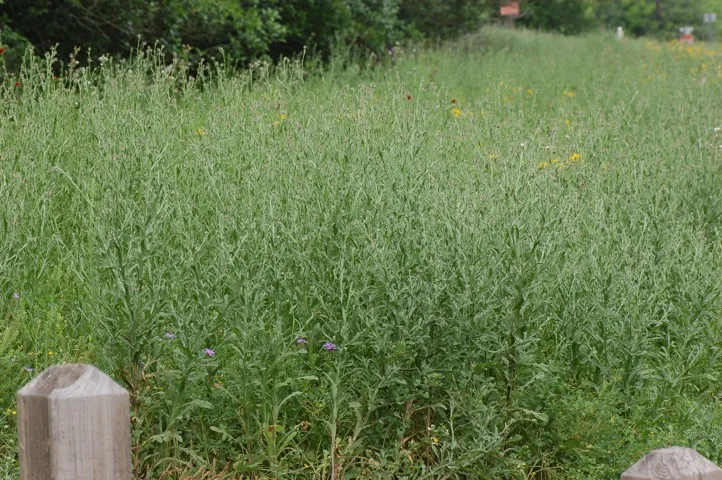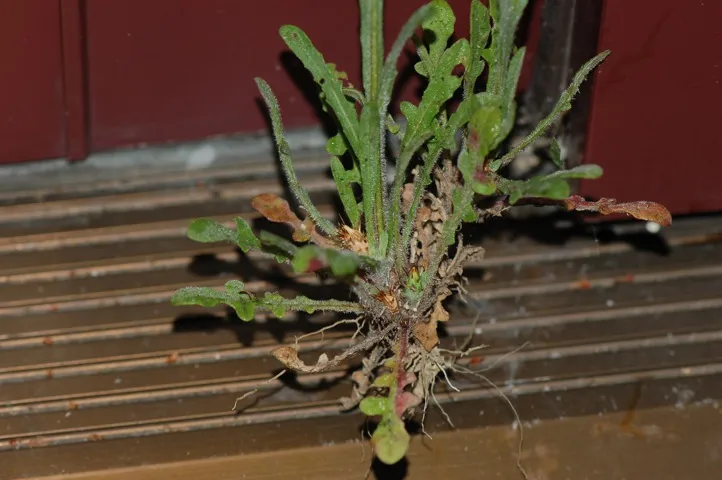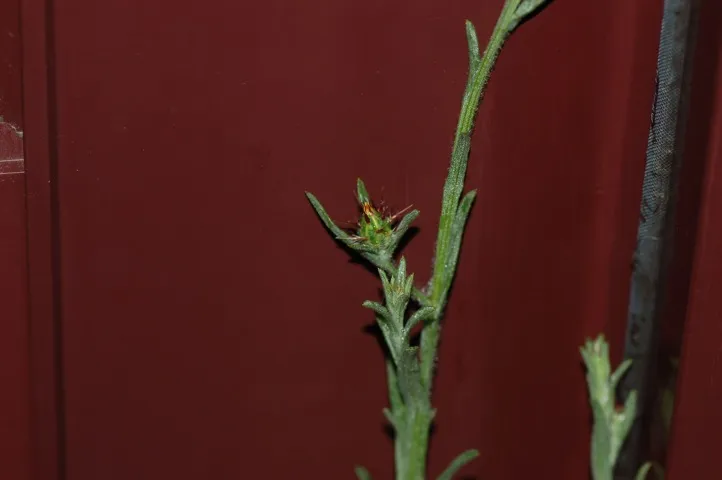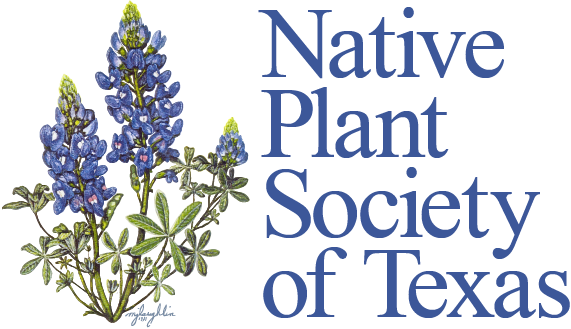By Delmar Cain
Growing up in East Texas I hated sandburs. You have probably seen the kind that I am referring to. Since it is a grass (Cenchrus echinatus), it hides in a yard until it matures in the late spring or early summer. Then it extends a long stem that has several seeds at the end, each enclosed in a bur about the size of a pencil eraser. Each bur has spines so sharp you can hardly grab it without getting a painful stab. Sandburs put a real crimp in my barefoot summer-romps in the yard.
But the native sandburs or grassburs are easily controlled, especially if a yard has a well-maintained turfgrass area. Keeping a healthy stand of grass with regular watering and an appropriately high setting on the mower, spells doom for the sandbur.

Unfortunately there is a new “Darth invader” on the block and it is not so easily controlled. In Texas the problem is the Malta starthistle (Centaurea melitensis), a member of the Sunflower family, which is a winter annual and occasional biannual. I can find only two good things to say about it. First birds eat (but also spread) its seeds. Second it is not quite as bad as its cousin, the yellow starthistle (Centaurea solstitialis), which has infested millions of acres of parks, croplands, rangelands, open fields and roadsides, mainly in California
But Malta starthistle is definitely a bad actor. Control methods for the two are similar and equally frustrating. Malta starthistle was introduced in California in the late 1700’s and with human help has now moved across Arizona, New Mexico (in both states it is listed as a noxious weed), across West Texas and as far east as Ellis County. Considering that it has moved across tough growing areas, know that it demands respect.

The plant begins in winter with a basal rosette. At this stage it can appear similar to an Indian blanket. In the spring one to several flower stems with narrow smooth edged leaves grows quickly, reaching a height of 3 feet. The leaves are glisten with whitish hairs and there are resinous glands overlaid with finer hairs. Each flower head is a half-inch or less, surrounded by sharp spines and at maturity opens at the top with a yellow thistle-like flower. Each plant can produce from 1 to 100 flower heads with up to 60 seeds in each head. That is a potential 6000 seeds per plant by my calculator.
Are you ready now for the really bad news? The plant is extremely difficult to control. It is also highly competitive and (according to the USDA) “often develops, dense, impenetrable stands that displace desirable vegetation.” In addition “the threat of injury from spines on the seed heads diminishes recreational opportunities, livestock grazing and other values.” Whether along the road in front of your house, in your pasture or in your yard, this is not a plant to ignore.
An even larger problem is that in addition to spreading rapidly, mowing probably makes it worse. Chemicals can be effective if applied at exactly the right time of the year. Pulling it by hand is time consuming and costly. Large infested areas may require tilling followed by a fallow time. When it has taken over an area, it requires a three-plus year effort to recover what was there before “Darth invader” arrived.

It is definitely here in Kendall County and I personally can attest that the plant is not easily controlled. I first noticed it about three years ago on the street by my house. I found out what it was and decided I wanted no part of it. I started taking a trash bag with me on my walks and pulled the plants by hand, usually getting a part of the taproot as well. I wore gloves because in addition to the spines, to me, the plant has an unpleasant odor.
Last year I didn’t see many plants. This year there were a few less that the first year, but there were still a lot of plants. The farther I got from my house the more plants I found, even though I had pulled plants on the main road as well. It dawned on me that along the right of way that had been mowed (an absent owner was trying to sell the home), the plants had multiplied.
The problem is that when mowed the plants still produce seed heads below the cut line, some as low as one-half inch from the soil level. Most other plants are controlled by the cut. But the Malta starthistle multiplies and then chokes out the competition. The seeds can be transported by road maintenance equipment and on the undercarriages of cars. Ranchers, neighbors or businesses, which regularly mow their right of ways for reasons of aesthetics or of safety, are unintentionally contributing to the problem. Their mowers are not be set low enough to get all of the seed heads. Mowers, passing vehicles and drainage along the ditches will spread the mature seeds, which may remain viable for several years.

I am not the one to give advice on how to eliminate this invader on your property. But it should not be casually mowed or simply ignored. Learn to recognize the plant and get your yard workers to help keep it out of your yard. Also get advice from the local County Extension Agent on what the state recommends. Or you might want to check out the recommendations on: www.texasinvasives.org/
However you proceed, please remember that Malta starthistle is different from our native Texas thistle. Our native thistle has stickers on the leaves, but does not cover the ground with spiny burs when it dies. A weed eater easily controls our native thistle, which provides seeds for many birds and nectar for butterflies. As for the Malta starthistle, a plant pulled in time prevents six thousand.
